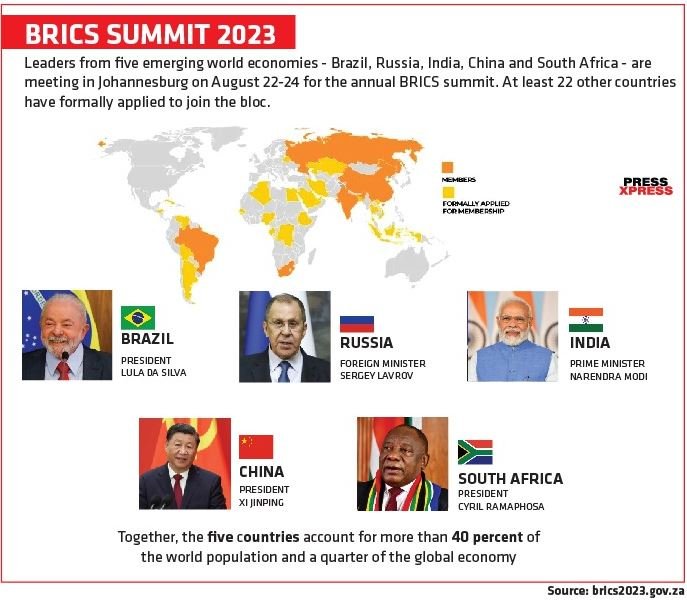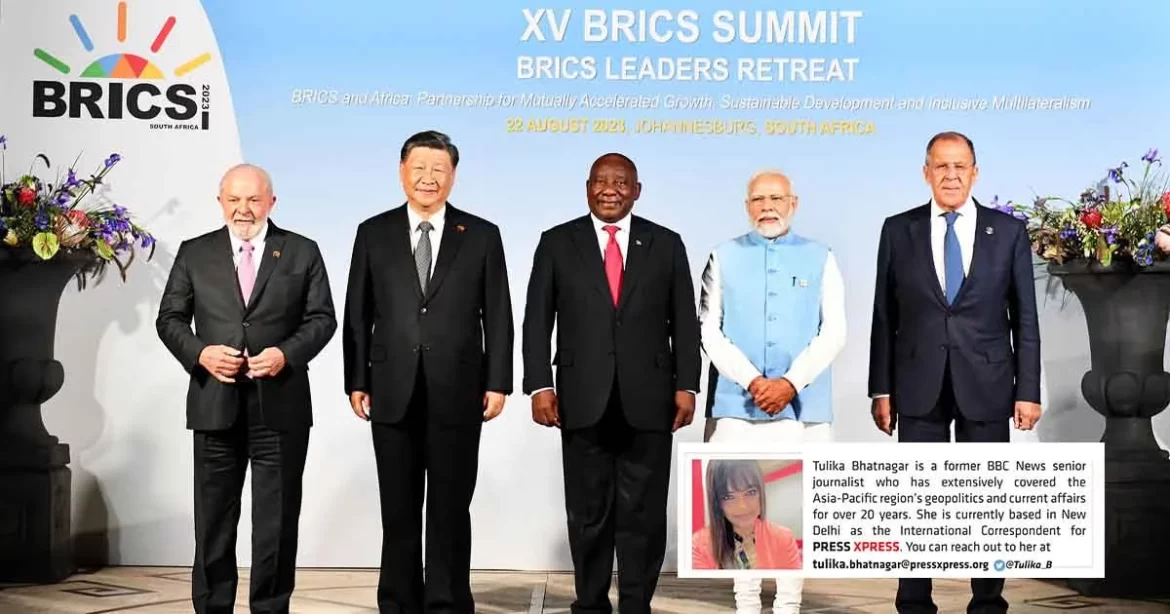Economies of the emerging new world order – Brazil, Russia, India, China, and South Africa – are drawing attention globally, as they meet for a three-day summit beginning Tuesday in the South African City of Johannesburg.
It is the 15th BRICS Summit.
The trade bloc created more than a decade ago in 2009 as an informal association now accounts for over 40% of the world’s population and 26% of the global GDP.
More than anything, it has consistently grown in clout and is seen as a determined voice of the Global South to the rest of the world.
You Can Also Read: India: Economy, election figure high in PM Modi’s I-Day speech
But fissures within the group remain. And resolving them is key to its future growth and accountability especially in the face of Western dominance.

Can India and China avoid a face off?
Amongst the most pressing frictions is the one between India and China, the group’s two most prominent members.
“From India’s growing ties with the US, to border clashes, to trade tensions, the room for India and China to put aside their differences is shrinking,” according to Abishur Prakash, CEO of Canada-based advisory firm, The Geopolitical Business. In an article in the South China Morning Post, Prakash said, “More divergence between the two countries could derail anything the BRICS members want to achieve.”
Many experts also feel that the expansion of the group, a major discussion point central to this year’s agenda, would result in more paralysis if the new members turn out to be “Chinese satellites”.
According to Ronak Gopaldas, political economist and consultant at the Institute for Security Studies (ISS), South Africa, BRICS insiders believe that Beijing’s motive is to “restructure and expand BRICS under its leadership”. The objective may be to “dilute Brazil and India’s role”, Gopaldas wrote in an article for ISS today.
Recent reports suggest China intends to argue for the inclusion of Argentina, Egypt, Indonesia, Kazakhstan, Saudi Arabia, United Arab Emirates, Nigeria, Senegal and Thailand, he added.
With these issues forming the backdrop, speculation is rife as to how India and China leaders, Prime Minister Narendra Modi and President Xi Jinping can avoid a face off at the summit.
“India needs to bear in mind that China won’t always sit idly by in the face of its protectionism.”
Global Times, China state-run newspaper
What’s causing the trade slowdown?
Looking at New Delhi, recent moves in trade have put the spotlight on a direct pushback against Beijing.
For instance, the latest ban on imports (without a licensing permit) of certain types of electronic devices, including laptops, tablets and personal computers, is apparently a hit at the Chinese market.
More than 70% of imported devices under these categories come from China.
Data from the Indian Ministry of Commerce and Industry also shows that China accounted for more than half of $8.8 billion worth of IT hardware products imported in fiscal year 2023.

Overall, India-China trade, which rose sharply in recent years, fell by nearly 1% earlier this year.
According to Indian government data, the trade deficit in the first half of 2023 has also declined significantly. Last year, it stood at over $67 billion, while it has now fallen to nearly $47 billion. However, it is the result of the total decline in China’s foreign trade, analysts say.
According to Chinese government data, China’s overall exports slid more than 3% while imports saw a nearly 7% decline.
Meanwhile, reacting sharply to India’s laptop import curbs, China’s mouthpiece newspaper Global Times ran an editorial lamenting the “crackdown” and India’s “protectionism”.
“India needs to bear in mind that China won’t always sit idly by in the face of its protectionism and India’s manufacturing dream and exports would sustain blows without the support of Chinese-made intermediates.
Read here: GT Voice: China won’t be a cover-up for India’s trade barriers
“The government of Prime Minister Narendra Modi is aiming to gain more support from the public before upcoming elections as the ‘Make in India’ campaign has not achieved noticeable results,” the newspaper said in another editorial.
Earlier this year, India had also imposed a fresh ban on nearly 230 apps and websites, many with links to China. The move came after a similar ban on 300 China-backed apps in 2020 when a lethal border clash broke out between the two countries.
Given this backdrop, it is important for the BRICS member countries to find a middle path to cooperate on a bigger, regional platform. The competing visions for BRICS expansion that India and China hold, would turn out to be a deciding factor in shaping the prospects of aspiring BRICS countries and the grouping’s future.
The impending face off of course, would mean how the BRICS bloc navigates this August, between a China-driven expansion push, versus an India-proposed approach to reform international payment systems, to give emerging economies more voice and representation.


